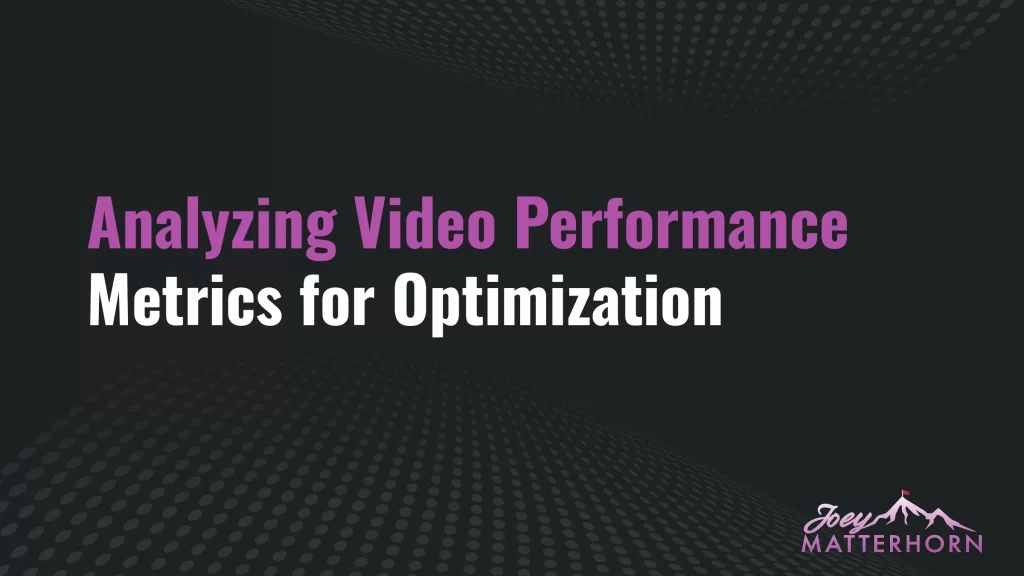Video marketing has become a powerful tool for small businesses to connect with their audience and drive engagement. With the rise of video consumption on digital platforms, creating compelling video content has never been more important. In this guide, we’ll explore effective strategies for using video marketing to engage your audience, from creating compelling content to analyzing performance metrics for optimization.
Creating Compelling Video Content
The key to successful video marketing is creating content that resonates with your audience. Start by identifying the goals of your video campaign, whether it’s to promote a product, educate your audience, or build brand awareness. Tailor your content to meet these objectives while also providing value to your audience.
Focus on storytelling and emotional appeal to capture your audience’s attention. Keep your videos concise and engaging, with a clear message and call-to-action. Utilize visual and auditory elements, such as graphics, music, and narration, to enhance the overall impact of your videos.

Choosing the Right Platform for Video Distribution
Selecting the right platform for distributing your videos is crucial for reaching your target audience. Consider the demographics and preferences of your audience when choosing platforms. Popular options for video distribution include YouTube, Facebook, Instagram, and LinkedIn.
Tailor your video content to suit the platform’s audience and format requirements. Optimize your videos for search by using relevant keywords in titles, descriptions, and tags. Engage with your audience by responding to comments and messages on the platform.
Incorporating Video into Your Social Media Strategy
Video has become a central component of social media marketing. Integrate video into your social media strategy by creating videos that align with your overall brand message and objectives. Share behind-the-scenes content, product demonstrations, customer testimonials, or educational videos to engage your audience.
Use features like Instagram Stories, Facebook Live, or LinkedIn Video to share real-time updates and interact with your audience in a more personal way. Encourage sharing and interaction by asking questions, running contests, or hosting live Q&A sessions.
Utilizing Live Streaming for Real-Time Engagement
Live streaming offers a unique opportunity to engage with your audience in real time. Use live streaming to showcase new products, host virtual events, or provide exclusive access to behind-the-scenes content. Live streaming allows you to interact with your audience through comments and reactions, creating a sense of immediacy and authenticity.
Promote your live streams in advance to build anticipation and encourage participation. Consider partnering with influencers or other businesses to reach a larger audience. After the live stream, repurpose the content by editing and sharing highlights or creating additional content based on audience feedback.

Analyzing Video Performance Metrics for Optimization
Analyzing performance metrics is essential for optimizing your video marketing efforts. Track key metrics such as views, watch time, engagement rate, and conversion rate to measure the effectiveness of your videos. Use this data to identify trends and insights that can inform future video content.
A/B test different video formats, lengths, and messaging to determine what resonates best with your audience. Use analytics tools provided by the video platforms to gain deeper insights into viewer behavior and preferences. Continuously monitor and adjust your video marketing strategy based on performance data to maximize engagement and ROI.
In Conclusion
Video marketing offers small businesses a powerful tool for engaging their audience and driving business growth. By creating compelling video content, choosing the right platform for distribution, incorporating video into your social media strategy, utilizing live streaming for real-time engagement, and analyzing performance metrics for optimization, you can effectively leverage video to connect with your audience and achieve your marketing goals. Remember, consistency and creativity are key to success in video marketing, so experiment with different formats and ideas to find what works best for your brand.
What are the benefits of video marketing for small businesses?
Video marketing can help small businesses to connect with their audience, drive engagement, and increase brand awareness. Video content can also showcase the value proposition of the products or services, educate the audience on how to use them, or provide social proof through customer testimonials. Video marketing can also boost SEO, increase conversions, and generate leads.
How to create compelling video content that resonates with the audience?
The first step to creating compelling video content is to identify the goals and objectives of the video campaign. Then, tailor the content to meet these goals while also providing value to the audience. Focus on storytelling and emotional appeal to capture the audience's attention. Keep the videos concise and engaging, with a clear message and call-to-action. Utilize visual and auditory elements, such as graphics, music, and narration, to enhance the overall impact of the videos.
How to choose the right platform for video distribution?
Choosing the right platform for video distribution depends on the target audience and the type of video content. Consider the demographics and preferences of the audience when selecting platforms. Popular options for video distribution include YouTube, Facebook, Instagram, and LinkedIn. Tailor the video content to suit the platform's audience and format requirements. Optimize the videos for search by using relevant keywords in titles, descriptions, and tags. Engage with the audience by responding to comments and messages on the platform.
How to incorporate video into the social media strategy?
Video is a central component of social media marketing. Integrate video into the social media strategy by creating videos that align with the overall brand message and objectives. Share behind-the-scenes content, product demonstrations, customer testimonials, or educational videos to engage the audience. Use features like Instagram Stories, Facebook Live, or LinkedIn Video to share real-time updates and interact with the audience in a more personal way. Encourage sharing and interaction by asking questions, running contests, or hosting live Q&A sessions.
How to analyze video performance metrics for optimization?
Analyzing video performance metrics is essential for optimizing the video marketing efforts. Track key metrics such as views, watch time, engagement rate, and conversion rate to measure the effectiveness of the videos. Use this data to identify trends and insights that can inform future video content. A/B test different video formats, lengths, and messaging to determine what resonates best with the audience. Use analytics tools provided by the video platforms to gain deeper insights into viewer behavior and preferences. Continuously monitor and adjust the video marketing strategy based on performance data to maximize engagement and ROI.

